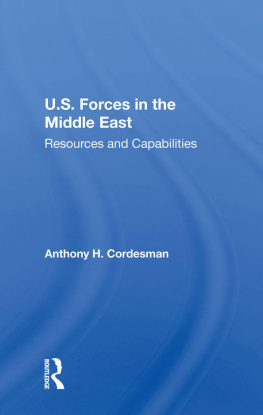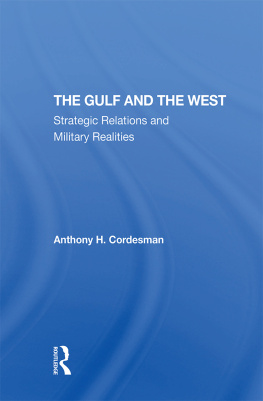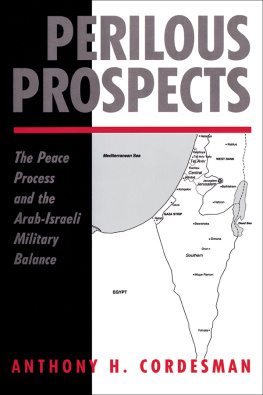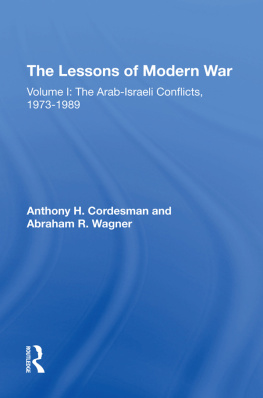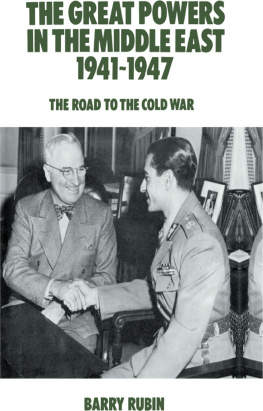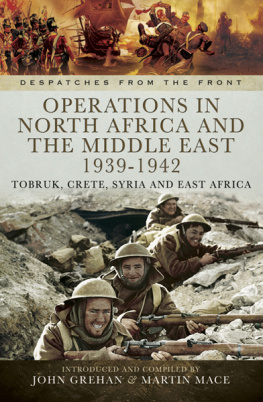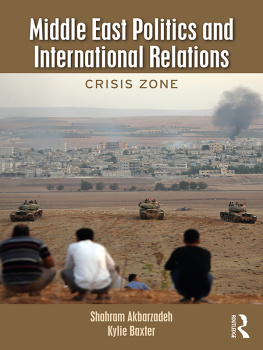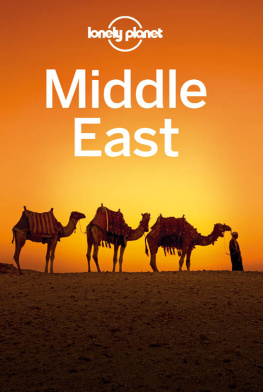U.S. Forces in the Middle East
CSIS Middle East Dynamic Net Assessment
U.S. Forces in the Middle East
Resources and Capabilities
Anthony H. Cordesman
First published 1997 by Westview Press
Published 2018 by Routledge
52 Vanderbilt Avenue, New York, NY 10017
2 Park Square, Milton Park, Abingdon, Oxon OX14 4RN
Routledge is an imprint of the Taylor & Francis Group, an informa business
Copyright 1997 by Anthony H. Cordesman
All rights reserved. No part of this book may be reprinted or reproduced or utilised in any form or by any electronic, mechanical, or other means, now known or hereafter invented, including photocopying and recording, or in any information storage or retrieval system, without permission in writing from the publishers.
Notice:
Product or corporate names may be trademarks or registered trademarks, and are used only for identification and explanation without intent to infringe.
Library of Congress Cataloging-in-Publication Data
Cordesman, Anthony H.
US forces in the Middle East : resources and capabilities / Anthony H. Cordesman
p. cm.
Includes bibliographical references.
ISBN 0-8133-3245-1 (hc). ISBN 0-8133-3246-X (pbk)
1. United StatesMilitary policy. 2. United StatesArmed ForcesMiddle East. I. Title.
UA23.C67374 1997
355'.031'09730536dc21
96-46615
CIP
ISBN 13: 978-0-367-21248-3 (hbk)
This volume is part of an ongoing dynamic net assessment of the Gulf. The project was conceived by David Abshire and Richard Fairbanks of the Center for Strategic and International Studies, and focuses on the foreign policy, military forces, politics, economics, energy sector, and internal security of each Gulf state, and US strategy and power projection capabilities in the Gulf. Separate volumes are available on Kuwait, Iran, Iraq, Saudi Arabia, and US forces. Bahrain, Oman, Qatar, and the UAE are combined into a single volume.
Each of these volumes is interlinked to provide comparable data on the current situation and trends in each country, and to portray the overall trends in key areas like the economy and the military balance. The volume on Iran provides a detailed graphic overview of the military trends in the region, but each volume shows how the key economic and military developments in each country relate to the developments in other Gulf countries.
At the same time, this series deliberately emphasizes nation-by-nation analysis, Iran and Iraq clearly deserve separate treatment. The Southern Gulf states are largely independent actors and are driven by separate strategic, political, economic, and. military interests. In spite of the creation of the Arab Gulf Cooperation Council (GCC), there is little practical progress in strategic, economic, or military cooperation, and there are serious rivalries and differences of strategic interest between Bahrain, Kuwait, Oman, Qatar, Saudi Arabia, and the UAE. The Southern Gulf cannot be understood in terms of the rhetoric of the Arab Gulf Cooperation Council, or by assuming that developments in Bahrain, Kuwait, Oman, Qatar, Saudi Arabia, and the UAE are similar and these states have an identity of interest.
These Gulf studies are also part of a broader dynamic net assessment of the Middle East, and a separate study is available of the trends in the Arab-Israeli military balance and the peace process. See Anthony H. Cordesman, Perilous Prospects, Boulder, Westview, 1996.
Anthony H. Cordesman
This volume is part of a six-volume series reporting on a dynamic net assessment of the Gulf. The project was conceived by David Abshire and Richard Fairbanks of the Center for Strategic and International Studies, and is part of a broader dynamic net assessment of the entire Middle East.
The author would like to thank Kimberly Goddes and Kiyalan Batman-glidj for their research and editing help in writing this series, and Thomas Seidenstein and David Hayward for helping to edit each volume.
Many US and international analysts and agencies played a role in commenting on drafts of the manuscript. So did experts in each Southern Gulf country. The author cannot acknowledge these contributions by name or agency but he is deeply grateful. The author would also like to thank his colleagues at the CSIS who reviewed various manuscripts and commented on the analysis. These colleagues include Richard Fairbanks and Arnaud de Borchgrave, and his Co-Director of the Middle East Program, Judith Kipper.
A.H.C.
1
Introduction
The United States plays a vital strategic role in the Gulf. US military forces and power projection capabilities deter Iran and Iraqtwo aggressive and radical regimes with military forces that might otherwise dominate the Gulf, The US prevents these states from achieving regional hegemony and intimidating their Southern Gulf neighbors. At the same time, the US plays a critical stabilizing role in the Southern Gulf, compensating in part for the lack of cooperation between the Gulf states and their internal rivalries. This strategic role affects a critical part of the world's energy supplies. The Gulf has at least 649 billion barrels of proven oil reserves out of the world's total proven reserves of 999.8 billion barrels, and 1,549 trillion cubic feet of gas out of a world total of 4,980 trillion cubic feet.
Put differently, the Gulf has nearly 65% of the world's oil reserves and 33% of its gas reserves. Iran has 8.9%, Iraq has 10.0%, Kuwait has 9.7%, Qatar has 0.2%, Saudi Arabia has 26.1%, and the UAE has 9.8%. The West, other countries of the developed world, and virtually all developing states are critically dependent on the stable flow of energy resources out of the Gulf, and every major projection of world energy balances indicates that this dependence will increase steadily throughout the period between 1995 and 2025the year where most such projections end.
There is no question that US military capabilities in the Gulf are a critical measure of its ability to maintain the stability of the world's economy and global economic development and growth. However, analyzing the trends in US military capabilities in the Gulf is not a simple task. US capabilities in the Gulf are shaped by the size of the total pool of forces the US maintains on a world-wide basis. It is US capability to deploy given portions of this pool of forces to the Gulf to deal with a specific crisis that is critical, not the forces the US normally deploys forward or allocates to the US Central Command (USCENTCOM).
This means that US capabilities are scenario specific in the sense they will be shaped by the level of warning the US receives, the support it receives from its allies, its forward deployments at the start of a contingency, the speed with which the US can deploy its forces, US capability to sustain its forces once deployed, and the risk the US may have to commit forces to another region that it cannot deploy to the Gulf.
At the same time, US capabilities are not static, they change over time and will be shaped by the defense effort the US has made in the years before a crisis. They will also interact with the future capabilities of allied forces. This point is particularly important in view of the changes in American defense policy, strategy, and force levels since the break up of the Soviet Union and Warsaw Pact.


